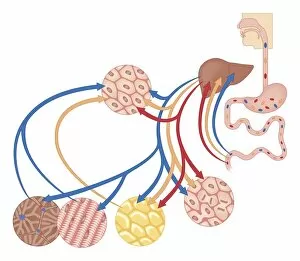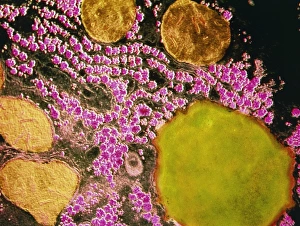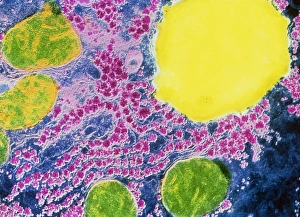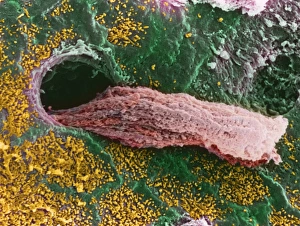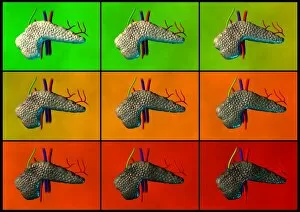Glycogen Collection
Glycogen, the energy powerhouse within our bodies, plays a vital role in fueling various physiological processes
All Professionally Made to Order for Quick Shipping
Glycogen, the energy powerhouse within our bodies, plays a vital role in fueling various physiological processes. Found predominantly in hepatocyte liver cells, its significance is beautifully captured in a cross-sectional biomedical illustration showcasing how our body utilizes food for energy. This intricate depiction highlights the liver's crucial functions of digestion, fat storage, and glycogen storage. The origins of understanding they are be traced back to Claude Bernard, a renowned 19th-century French physiologist whose groundbreaking research revolutionized our knowledge of this complex carbohydrate. A silver plaquette commemorating Bernard showcases his immense contributions to unraveling the mysteries of the liver. Examining liver tissue through transmission electron microscopy (TEM) reveals an astonishing false-color image that unveils the intricacies of hepatocytes at a microscopic level. These TEM images provide valuable insights into the structure and organization of these specialized cells responsible for storing glycogen. In addition to its presence in hepatocytes, it also finds relevance beyond hepatic function. False-color TEM images offer glimpses into other cellular realms where it plays significant roles; from cartilage cells to secreting uterine glands. Moreover, diabetes mellitus - a condition characterized by impaired glucose metabolism - is visually depicted through computer artwork highlighting the importance of understanding glycogen regulation for maintaining metabolic balance. To truly comprehend this remarkable molecule on a molecular scale, we turn to molecular models illustrating individual glycogen units intricately linked together like building blocks forming an extensive network within our cells. As we delve deeper into exploring the wonders of biology and physiology, let us not forget Claude Bernard's pioneering work that laid the foundation for comprehending how our bodies store and utilize glycogen – an essential component ensuring optimal functioning and vitality.



